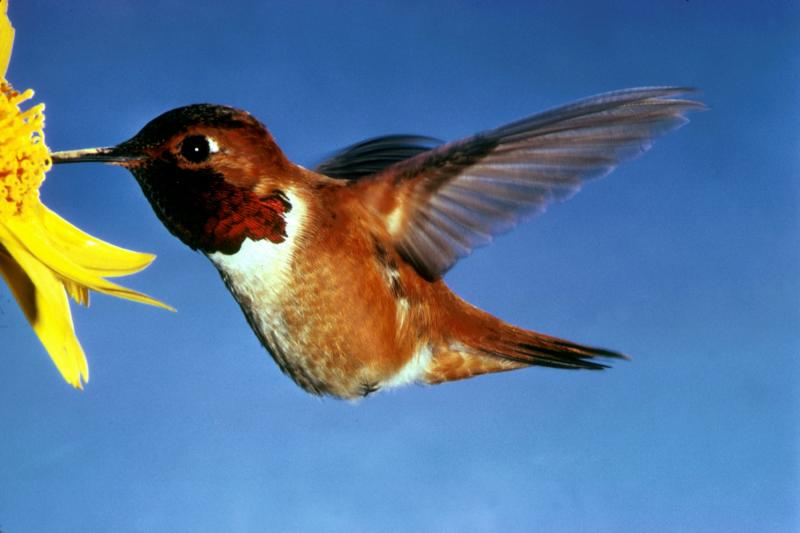Miniature Superbirds
Job 12:7
But ask now the beasts, and they shall teach thee; and the fowls of the air, and they shall tell thee:
One of the many delights of moving to the Pacific North West of the United States has been getting acquainted with hummingbirds. Watching wildlife documentaries in British television had certainly piqued my interest for these miniature superbirds, but to be able to see them up close is a wondrous thing.
 Although a couple of species of hummingbird can be seen in Washington state, our most common species is the rufous, growing to just over 3 inches long. The bird’s name obviously derives from the sound made by the remarkably fast beating of the wings – up to 80 beats per second. Their unusual figure of 8 wing motion enables these birds to hover, and even to fly backwards, when backing away from their food source – sweet, sugary nectar from flowers.
Although a couple of species of hummingbird can be seen in Washington state, our most common species is the rufous, growing to just over 3 inches long. The bird’s name obviously derives from the sound made by the remarkably fast beating of the wings – up to 80 beats per second. Their unusual figure of 8 wing motion enables these birds to hover, and even to fly backwards, when backing away from their food source – sweet, sugary nectar from flowers.
The birds’ fast wing action, rapid heartbeat, and very fast flight cause them to burn up fuel very fast. That is why one of their main food sources is the high calorie diet provided by nectar. For householders, this affords us an opportunity to attract the beautiful, fascinating little visitors, by hanging feeders, containing sugar solutions.
So, did hummingbirds evolve their rapid motion to burn off the calories from their high octane fuel? If so, early less active birds could have become too fat to fly! Or did their long beaks and tongues evolve, to get the food needed for their active lifestyle? If so, early birds would have died of exhaustion. Whichever way you look at it, the evolution of the hummingbird simply does not make sense. These remarkable superbirds look designed to do exactly what God designed them to do.
Prayer:
As we consider these lovely little birds, we praise You, O Lord, that You consider our needs more highly than the remarkable creatures that You have made. Amen.
Notes:
Dreves, D., The hummingbird: God’s tiny miracle, Creation 14(1):10–12, December 1991
Image: Dean Biggins, US Food and Wildlife Service, Public Domain